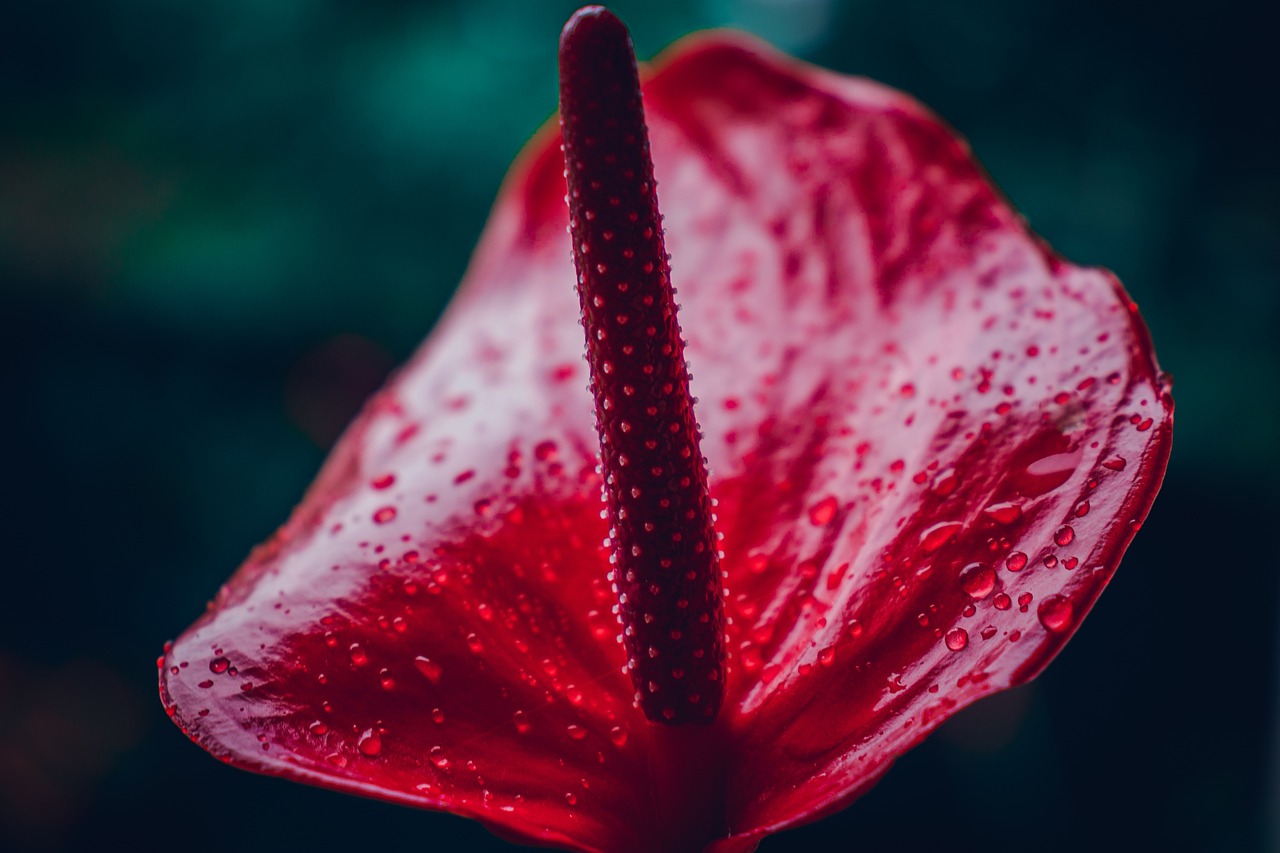“`html
Anthurium: A Guide to the Flamingo Flower
Anthurium, commonly known as the Flamingo Flower, is a captivating plant that has captured the hearts of plant enthusiasts worldwide. With its vibrant, heart-shaped blooms and glossy foliage, it adds a touch of elegance to any indoor or outdoor garden. In this blog post, we will explore the world of Anthurium, including its natural habitat, unique characteristics, symbolic meanings, and comprehensive care tips. Whether you’re a seasoned plant lover or a beginner, this guide will provide you with everything you need to know about growing and maintaining Anthurium.
Understanding Anthurium: Habitat and Characteristics
Natural Habitat
Anthurium is native to the tropical regions of Central and South America, particularly in Colombia and Ecuador. These plants thrive in warm, humid environments, often found under the canopy of rainforests. In their natural habitat, Anthuriums grow as epiphytes, which means they attach themselves to trees and other structures rather than rooting in soil.
Unique Characteristics
The Anthurium plant is easily recognizable by its distinctive spathes and spadices. The spathe is the colorful, waxy leaf that resembles a flower petal, while the spadix is the spike that holds the tiny, true flowers. These plants come in a variety of colors, including red, pink, white, and even green. Apart from their beauty, Anthuriums are known for their air-purifying properties, making them an excellent choice for indoor environments.
Symbolic Meanings
Anthuriums are often associated with hospitality and kindness, making them a popular gift for housewarmings and special occasions. The flower’s heart-shaped appearance symbolizes love and friendship, adding a layer of sentiment to its beauty. In some cultures, Anthuriums are believed to bring good fortune and prosperity.
How to Grow and Care for Anthurium
Choosing the Right Environment
To successfully grow Anthurium, it is crucial to mimic its natural habitat as closely as possible. These plants thrive in bright, indirect light. Direct sunlight can scorch the leaves, so placing them near a window with filtered light is ideal. Anthuriums prefer temperatures between 65-80°F (18-27°C) and high humidity levels, around 70-80%. Consider using a humidifier or placing a tray of water nearby to maintain humidity.

Soil and Potting
When it comes to soil, Anthuriums prefer a well-draining potting mix. A mixture of orchid bark, peat moss, and perlite is a great choice. This combination allows for adequate aeration and drainage, preventing root rot. Ensure that your pot has drainage holes to avoid waterlogging.
Watering Requirements
Watering Anthurium correctly is essential for its health. Allow the top inch of soil to dry out before watering again. Overwatering can lead to root rot, so it’s better to underwater than overwater. During the growing season (spring and summer), you may need to water more frequently, while reducing watering in the dormant period (fall and winter).
Fertilization
Fertilize Anthurium every 6-8 weeks during the growing season with a balanced, water-soluble fertilizer at half strength. Avoid over-fertilizing, as this can harm the plant. In the fall and winter, reduce fertilization as the plant’s growth slows down.
Pruning and Maintenance
Regular maintenance helps keep your Anthurium looking its best. Remove any yellow or dead leaves to encourage new growth. Pruning can also help shape the plant and promote bushier growth. Always use clean, sterilized tools to prevent disease.

Additional Tips for Thriving Anthurium
Pest Management
Anthuriums are generally resistant to pests but can occasionally suffer from aphids, spider mites, or mealybugs. Regularly inspect your plant and wipe the leaves with a damp cloth to remove any pests. If necessary, use an insecticidal soap or neem oil to treat infestations.
Repotting
Repot your Anthurium every 2-3 years or when it becomes root-bound. Choose a pot that is slightly larger than the current one, and refresh the potting mix to provide new nutrients. Repotting in the spring is ideal, as it aligns with the plant’s active growth period.
Propagation
Anthurium can be propagated through division or stem cuttings. For division, gently separate the offsets or baby plants from the mother plant and pot them individually. For stem cuttings, ensure each cutting has a node and at least one leaf. Place the cuttings in water or soil until roots develop.
Conclusion
With its stunning appearance and air-purifying qualities, Anthurium is a rewarding plant to grow and care for. By understanding its natural habitat and providing the right conditions, you can enjoy the beauty and benefits of this remarkable plant in your home or garden. For more information on tropical plants, check out our comprehensive guide to tropical plants.
To learn more about plant care and tips, visit the Royal Horticultural Society’s website.
“`
